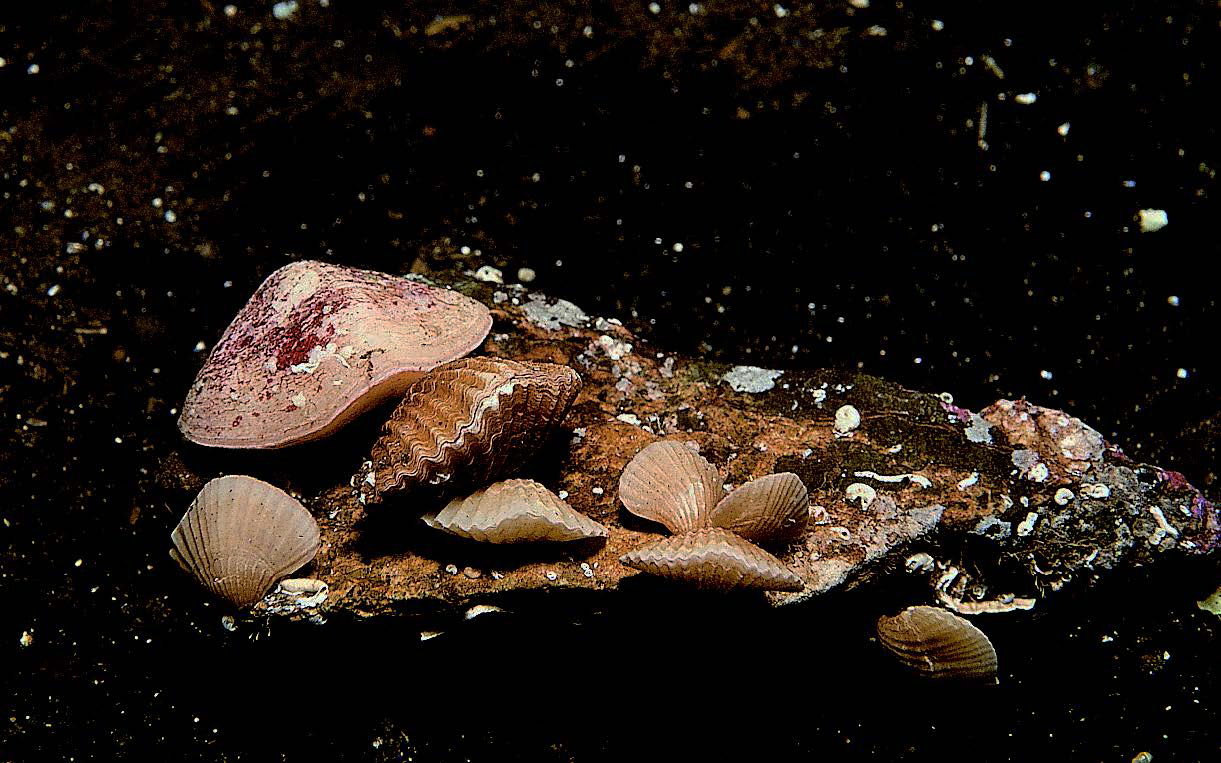Antranig Basman, Charlie Gibbs, Donna Gibbs, Elaine Humphrey, Andy Lamb, Andrew Simon
May 18th, 2023
Galiano Island’s lampshell diversity
‘Brachiopoda’ is formed of the Ancient Greek βραχίων (brakhíōn), meaning “arm”, and πούς (poús), for “foot”.
Brachiopods (brachiopods) are a phylum of shelled marine animals found in intertidal and subtidal waters, represented by over 400 species worldwide. The phylum may be divided into three extant subphyla, including the Craniiformea, Linguliformea and Rhynchonelliformea. Of the seven lampshell species known to British Columbia, only three are expected to occur within the Salish Sea: Laqueus californicus, Terebratalia transversa and Terebratulina unguicula. One species, T. transversa, is known to Galiano Island.
 Traditionally, brachiopods were classified into two major groups, based
on whether their valve hinge structures are articulate or inarticulate.
Shells are orientated in a dorsal-ventral manner, closely resembling
bivalve molluscs, the shells of which are lateral in orientation. Yet,
whereas bivalves are symmetrical between valves (valves mirror each
other), the plane of symmetry in brachiopods cuts through the middle of
their valves (valves do not mirror each other). In contrast to bivalves,
brachiopods are also typically attached to the substrate by a stalk.
They share their feeding organ, the lophophore, in common with the Bryozoa, Entoprocta and Phoronida.
Traditionally, brachiopods were classified into two major groups, based
on whether their valve hinge structures are articulate or inarticulate.
Shells are orientated in a dorsal-ventral manner, closely resembling
bivalve molluscs, the shells of which are lateral in orientation. Yet,
whereas bivalves are symmetrical between valves (valves mirror each
other), the plane of symmetry in brachiopods cuts through the middle of
their valves (valves do not mirror each other). In contrast to bivalves,
brachiopods are also typically attached to the substrate by a stalk.
They share their feeding organ, the lophophore, in common with the Bryozoa, Entoprocta and Phoronida.
Community science contributions
Since the Biodiversity Galiano project began in 2016, our community has documented one lampshell, Terebratalia transversa, the only species known to occur around Galiano Island.
Most lampshells live at great depths and are thus seldom encountered. Laqueus californicus is known to occur in mass aggregations (945 m-2) at depths as deep as 700 m, which is likely why this species has eluded search efforts to date. Terebratulina unguicula occurs within the subtidal range sampled; however, this species is notable for inhabiting the extremely low-oxygen waters occurring in some fjords within British Columbia and, thus, may not be expected to occur locally.